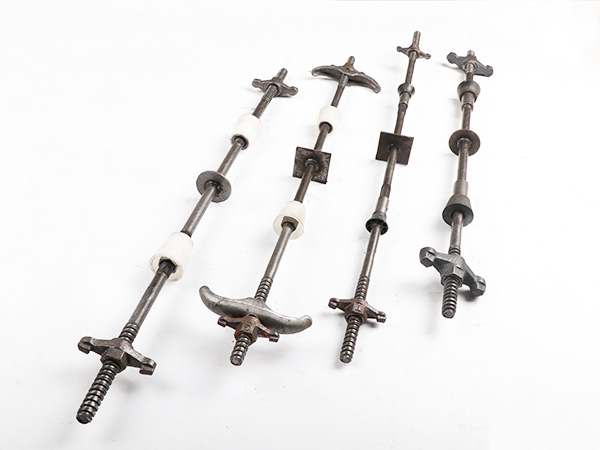- Site Navigation -

Wall-Penetrating Bolt
A Wall-Penetrating Bolt is a general term for a category of long,heavy-duty fasteners designed to pass completely through a wall,partition,or other building structure to create a se......
Wall-Penetrating Bolt:English Introduction
A Wall-Penetrating Bolt is a general term for a category of long,heavy-duty fasteners designed to pass completely through a wall,partition,or other building structure to create a secure,mechanical connection.The defining characteristic of this bolt is that it engages with both sides of the wall,typically using bearing plates and nuts on each exposed end to clamp the structure securely between them.
Its primary function is to distribute extreme loads across a wide area of the wall,providing one of the strongest and most reliable anchoring methods available,especially for critical structural applications and heavy loads.
Key Features&Design:
Full Penetration:The bolt shaft is long enough to pass entirely through the wall's thickness.
Dual-Sided Assembly:The system is not complete without components on both the access side(near side)and the far side of the wall.This always includes:
A continuous threaded rod or a very long bolt.
Bearing Plates:Large,flat steel plates(square or round)that distribute the clamping force over a larger surface area of the wall,preventing localized crushing.
Hex Nuts:High-strength nuts used to tighten the assembly on both ends.
High Strength Materials:Typically manufactured from high-strength carbon steel,often with a corrosion-resistant finish like zinc-plating or hot-dip galvanizing.Stainless steel versions are used for highly corrosive environments.
Adjustability:The use of a continuous threaded rod(all-thread)allows for infinite adjustability to accommodate varying wall thicknesses.
How It Works:The Principle of Compression
The bolt itself does not primarily hold by expansion or friction within the hole.Instead,it works by placing the wall itself into compression:
The bolt is inserted through a pre-drilled hole that passes through the entire wall.
On the far side,a bearing plate and one or two nuts are assembled.
On the near side,another bearing plate is added,followed by the fixture to be secured(e.g.,a ledger board,bracket),and finally the nuts.
As the nuts on the near side are tightened,they pull the rod,drawing the far-side assembly inward.
This action clamps the entire wall structure securely between the two bearing plates.The strength of the connection is derived from the compressive strength of the wall material itself,which is typically very high.
Common Applications:
Structural Ledger Connections:The most critical application is securing wooden deck ledger boards to concrete or masonry rim joists.This is often required by building codes for safety.
Heavy Machinery Installation:Anchoring large industrial equipment,generators,and structural supports to concrete walls and floors.
Seismic and Hurricane Bracing:Installing tension ties and restraint systems in buildings located in areas prone to earthquakes or high winds.
Pipe and Conduit Supports:Mounting heavy pipe runs,cable trays,and HVAC ducting to walls where extreme load capacity is needed.
Retrofitting and Reinforcement:Adding structural strength to existing masonry walls.
Advantages:
Ultimate Strength:Offers the highest possible pull-out(tensile)resistance of any mechanical anchor type,as the load is transferred through the entire wall thickness.
Verifiable Installation:The presence of the nut and plate on the far side provides a visible and indisputable confirmation of a proper installation,which is crucial for safety inspections.
Ideal for Hollow Materials:Exceptionally effective in hollow masonry blocks(CMU)or brittle materials where expansion anchors have limited effectiveness,as it clamps the entire wall assembly.
No Expansion Concerns:Eliminates the risk of cracking the base material that can sometimes occur with wedge-type expansion anchors.
Installation Overview:
Drill:Drill a clean,straight hole completely through the wall using a rotary hammer and a carbide-tipped bit.The hole diameter should be slightly larger than the rod diameter.
Clean:Thoroughly clean the hole of all dust and debris.
Insert&Assemble Far Side:Insert the rod through the hole.Have a worker on the far side place a bearing plate and tighten nuts onto the threads.
Assemble Near Side:On the near side,slide on the bearing plate,then the fixture to be mounted.
Tighten:Thread the nuts onto the near side and tighten them sequentially with a wrench to the specified torque,ensuring the wall is compressed evenly.








